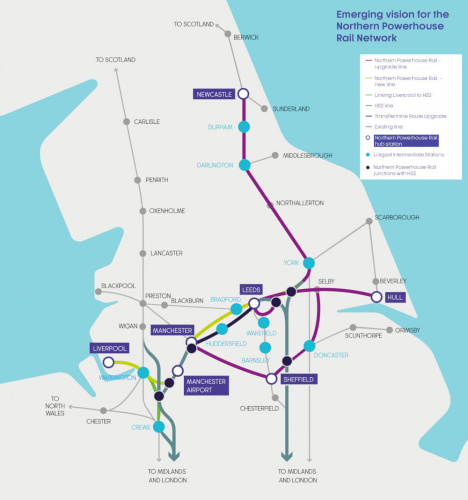 Jerald Solis, Business Development and Acquisitions Director, Experience Invest, looks at the achievements of the controversial initiative and asses what the new prime minister must do to make his mark on it
Jerald Solis, Business Development and Acquisitions Director, Experience Invest, looks at the achievements of the controversial initiative and asses what the new prime minister must do to make his mark on it
With the Tory leadership contest now won, the next few months represent a period of immense potential for Prime Minister Boris Johnson. And while it’s true that negotiating the final phase of our departure from the European Union will occupy much of his time, it is vital for him not to let this overshadow the fundamental internal challenges facing the UK.

It came as a pleasant surprise to hear from Johnson that he wants to be the Prime Minister who responsible for completing the long-awaited Northern Powerhouse Rail project in a speech in Manchester last month. The first reason is that with work expected to be completed in 2033, the rail link might be disregarded as an abstract concern given the looming Brexit deadline. The second is that the Northern Powerhouse is generally seen as the pet project of Johnson’s rival ex-Chancellor George Osborne and, as a result, it’s not been a hot topic of discussion since Osborne left parliament in 2017.
Rebalancing the economy away from London and the South-East is a good idea for a number of reasons, not least because doing so would relieve some of the demand in London’s housing market. Consequently, it’s important that the government continues to maintain its long-term commitment to regenerating the region and devolving political power to local decision makers.
Has the project succeeded?
Work on Northern Powerhouse Rail, the flagship infrastructure project, has yet to begin and so any assessment of the Northern Powerhouse has to take a wider look at whether or not the strategies employed to bring economic growth and jobs to the region have had the desired effect.
Five years later, what’s clear is that progress has been made on some fronts. A recent report published by the Institute of Public Policy (IPPR) North, indicates that there’s been an uptick in jobs and investment since 2014. According to the report, there are 34,000 more jobs in professional, scientific and technical jobs, plus a further 54,523 jobs in manufacturing roles. Employment has also increased approximately 7% compared to the UK average of just over 6%.
Perhaps most encouragingly of all, the report revealed the North has experienced a slightly higher level of economic growth than the national average. The region’s GDP rose by 10.7% over the period, compared with 10.6% for the UK as a whole and 9.7% for the UK excluding London.
Yet on other fronts, more progress needs to be made. For instance, new infrastructure has been largely withheld and transport spending has failed to reach the levels initially promised by Osborne in 2014. Indeed, the report highlights how the government has actually undermined their own project by executing spending cuts in the period. Perhaps unsurprisingly, this has had a negative impact on the quality and reliability of transport in the North: approximately 5% of all transport services were either cancelled or over half an hour late in 2018-19.
Ultimately, if the government is to truly demonstrate its commitment to the Northern Powerhouse then it needs to fund improvements to existing transport networks, and ensure that already slated works aren’t delayed further. Moving responsibility for these projects away from Whitehall and placing them within the remit of a new, independent body, Transport for the North, is a positive step but it remains to be seen if this will lead to better transport links going forward.
What must the government do now?
For now, the government’s first task is to ensure that the Northern Powerhouse remains politically salient into the autumn and this means Boris Johnson cannot neglect the issue in favour of a sole focus on Brexit. A firm spending commitment would also be a welcome inclusion in Chancellor Sajid Javid’s budget so that local politicians and business people can begin planning for the future. Ultimately, the Northern Powerhouse is a wide-ranging project that spans many industries and will take decades to complete. It cannot be achieved by Boris Johnson alone but the support of him and senior figures from within the cabinet could be an invaluable asset in attracting investment to the region.
At present, much of the region’s growth has been driven by the construction industry with a host of private developers attracted to the high-growth regions of Liverpool and Manchester in the North-West and Leeds and Hull in Yorkshire. However, the government could be doing more to facilitate construction projects in the region. Indeed, if the Prime Minister is serious about making the Northern Powerhouse a success he should swiftly implement new policies to boost economic productivity in the region.
It’s great to see Boris Johnson reiterating his government’s commitment to making the Northern Powerhouse dream a reality. Yes, there’s still much to be done, but the signs are positive. The North is gradually beginning to get the attention and investment it needs to become a key driver of Britain’s growth.











Water Sector Talent Exodus Could Cripple The Sector
Maybe if things are essential for the running of a country and we want to pay a fair price we should be running these utilities on a not for profit...